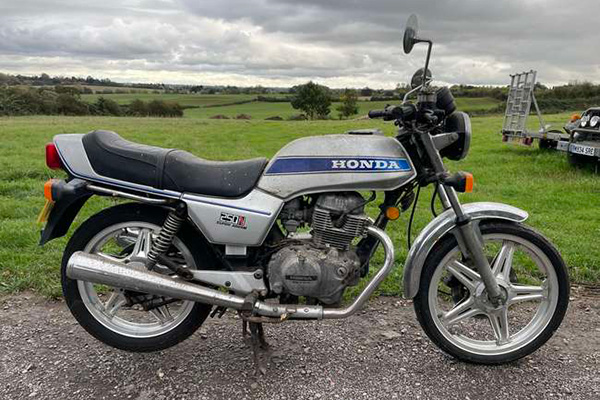The Myths And Facts About "Matching Numbers"
So, can we put a monetary value on a nice feeling about a bike? Well, many of us have been there when heart overruled head when making that impulse buying decision and quickly discovering "a weekend project" referred to the length of time discovering all the unseen issues rather than some quick spanner work and minor fixes... so that monetary value can turn out to be negative...
But in some cases that "nice feeling" can sway a classic motorcycle valuation upwards by tens of thousands of £s or €s. And it can all be about "matching numbers". That's when the frame number and engine number are either the same - or different, but fall within the parameters of how various manufacturers paired up engines and frames in the factory back in the day.
While we may look for engine and frame numbers to be the same, it's actually engine and frame numbers matching manufacturer or club records that matter.
Mark Bryan, motorcycle specialist at Iconic Auctioneers, has experienced and witnessed the whole range of feelings when desirable bikes change hands.
"Buyers and collectors nowadays would invest in an original bike as opposed to one that's got the wrong engine or has been painted or something like that, so originality is quite key," he says.
"When you go back to the older bikes, then a matching numbers bike just kind of gives you a little bit of a nice feeling because it's the original pairing of engine and frame. It's not always necessarily the same number, and most of the clubs have factory records and they can confirm originality.
"Take an original Brough, for instance: let's say it's an SS100 and it's a really nice example. We're probably talking £250,000. But if it's not a matching numbers bike then you could take probably £100,000 off the price.
"That's an extreme case, because you're talking investment quality bikes. Let's also consider a Vincent, say a Black Shadow - £40,000 or £50,000 with matching numbers, £25,000 to £30,000 without."
Many of us direct our "nice feelings" to more modern classics, which are usually vastly less expensive - and particularly so in a market which seems to be resetting itself, or, in plain terms, becoming a buyers' market with some undoubted bargain classics out there.
This is where club membership, or simply knowing experts in the classic bike community, comes in handy.
"Hondas in the '70s were rarely matching numbers, but they were always within a few hundred or whatever, so if it's within that few hundred numbers, then it's generally the correct numbers," said Mark.

"But one of the very first bikes I did sell, a CB 250, had the same engine and frame numbers. That's quite rare on some Japanese bikes. Suzukis don't generally have the same engine and frame numbers, but Yamahas do tend to.
"It was just the way they produced things back in the day - they just kind of assembled them in the factory and then made a note of what they are once they're assembled. They'd tap the numbers on by hand.
"But older, post-war, Triumphs were always the same numbers for frame and engine.
When the engine was fitted into the frame, however, they would then tap the frame number onto the engine. But BSAs never were matching.
"Vincent engine and frame numbers are always 1900 digits apart, which sounds really bizarre, but that's what they are.
"All these bikes look exactly the same as a matching numbers bikes, but you pay a lot less. But if you're buying high end, then it makes a big difference."
On more modern bikes Mark tends to put value on mileage.
"On the really old stuff, it doesn't matter. But the more modern bikes, especially maybe 30-year-old bikes, and if they're clearly original, obviously they've got speedos with miles on them and people like under 10,000 miles. If it's 1,000 or 2,000 miles, it becomes quite a desirable bike," said Mark.
"But then, of course, the dilemma there is what do you do with a bike with no or low miles? You really just have to put it in your collection and not use it, but if you've got something which less than 10,000 miles on it, you can, to a certain degree, use it - but you maybe don't want to push it over 10,000. But a bike with perhaps 5,000 miles on it - you can put a thousand miles on it. It's not going to make a difference, and the value would remain the same."
So the classic bike game is all about numbers: engine, frame, mileage and usage, sometimes individually, sometimes combinations or permutations.
The trick is not to gamble: consult experts in clubs and classic bike communities.
Your number might just come up - in more ways than one.
Article written by Iain Macauley, Automotive Journalist.

COMMENT